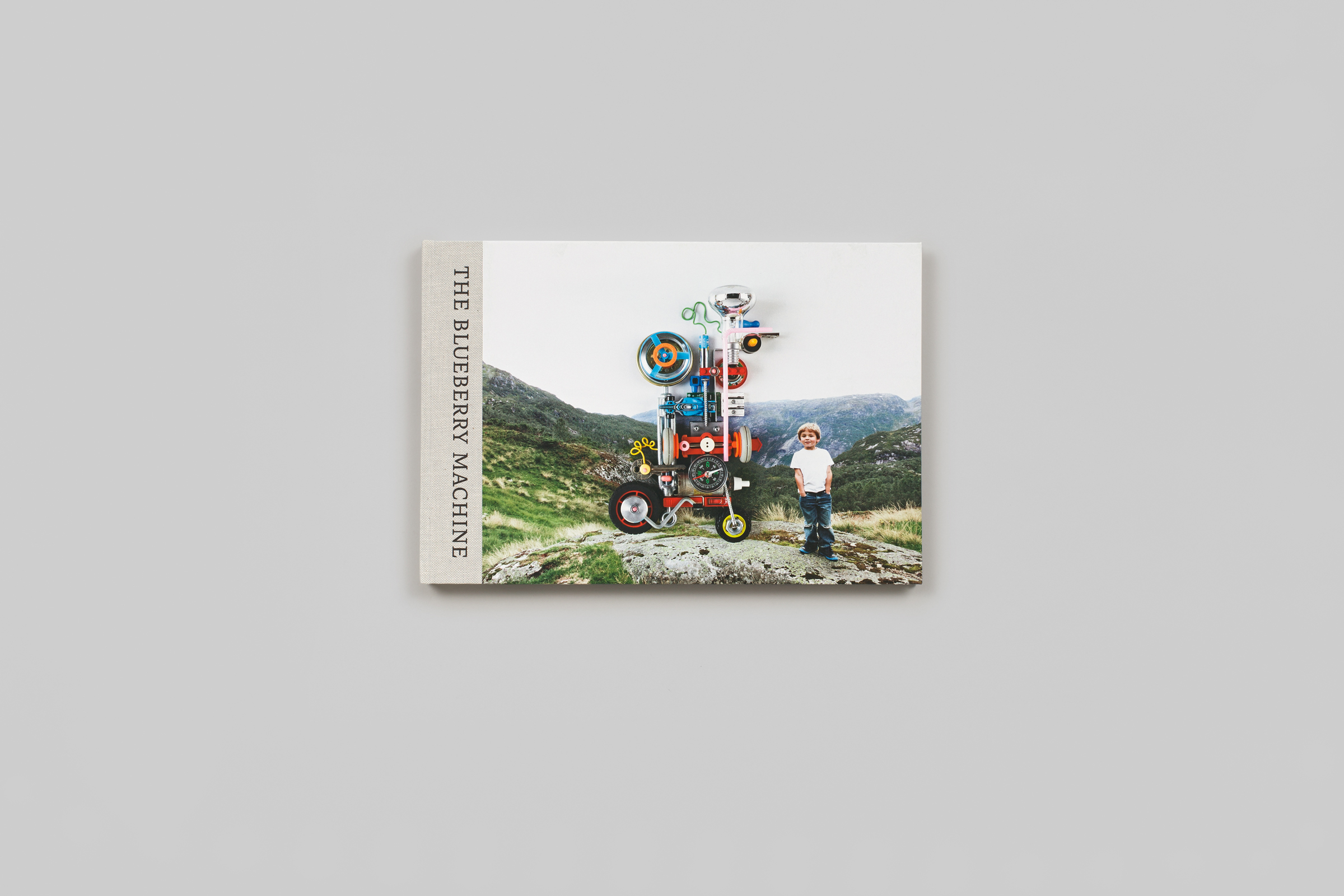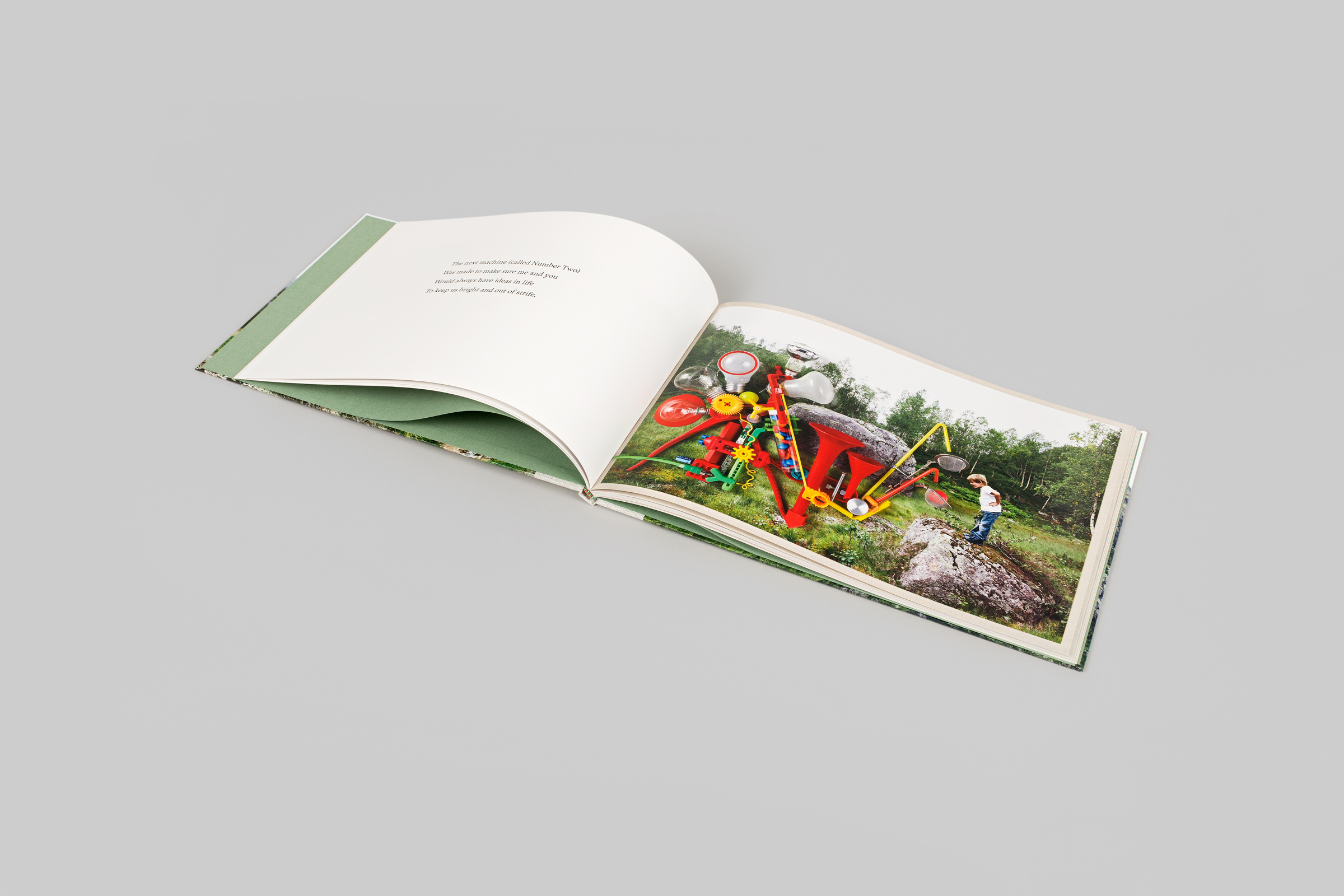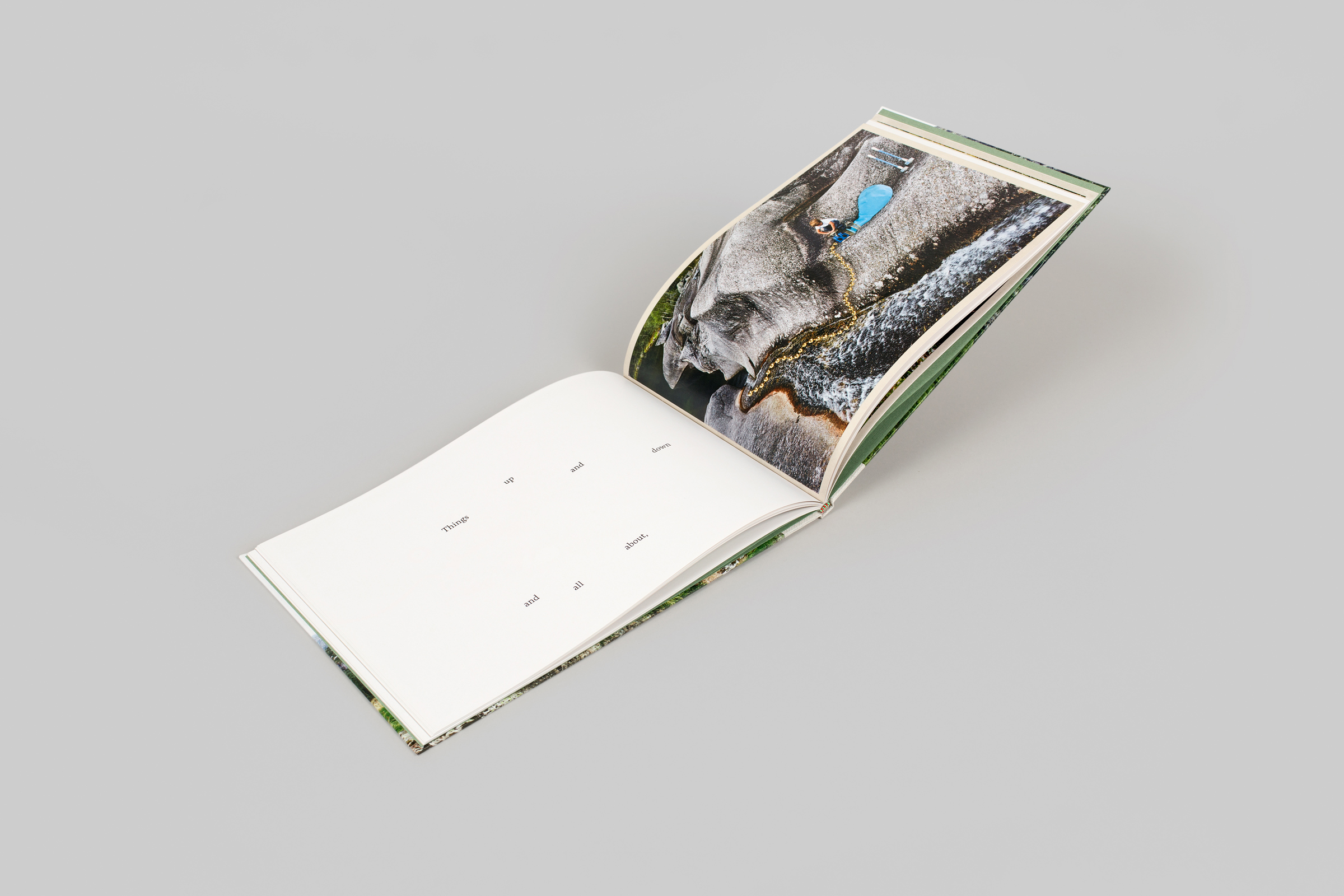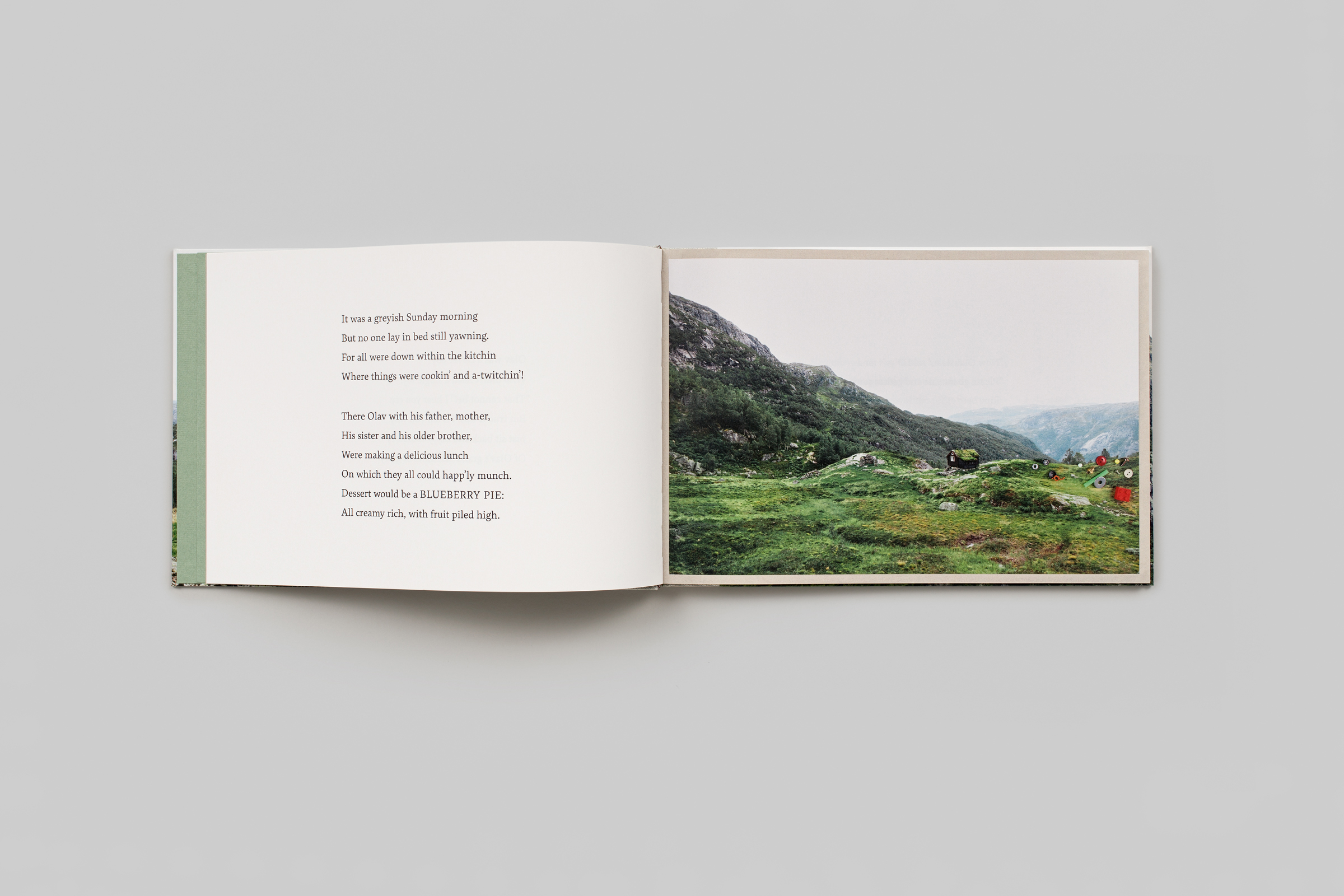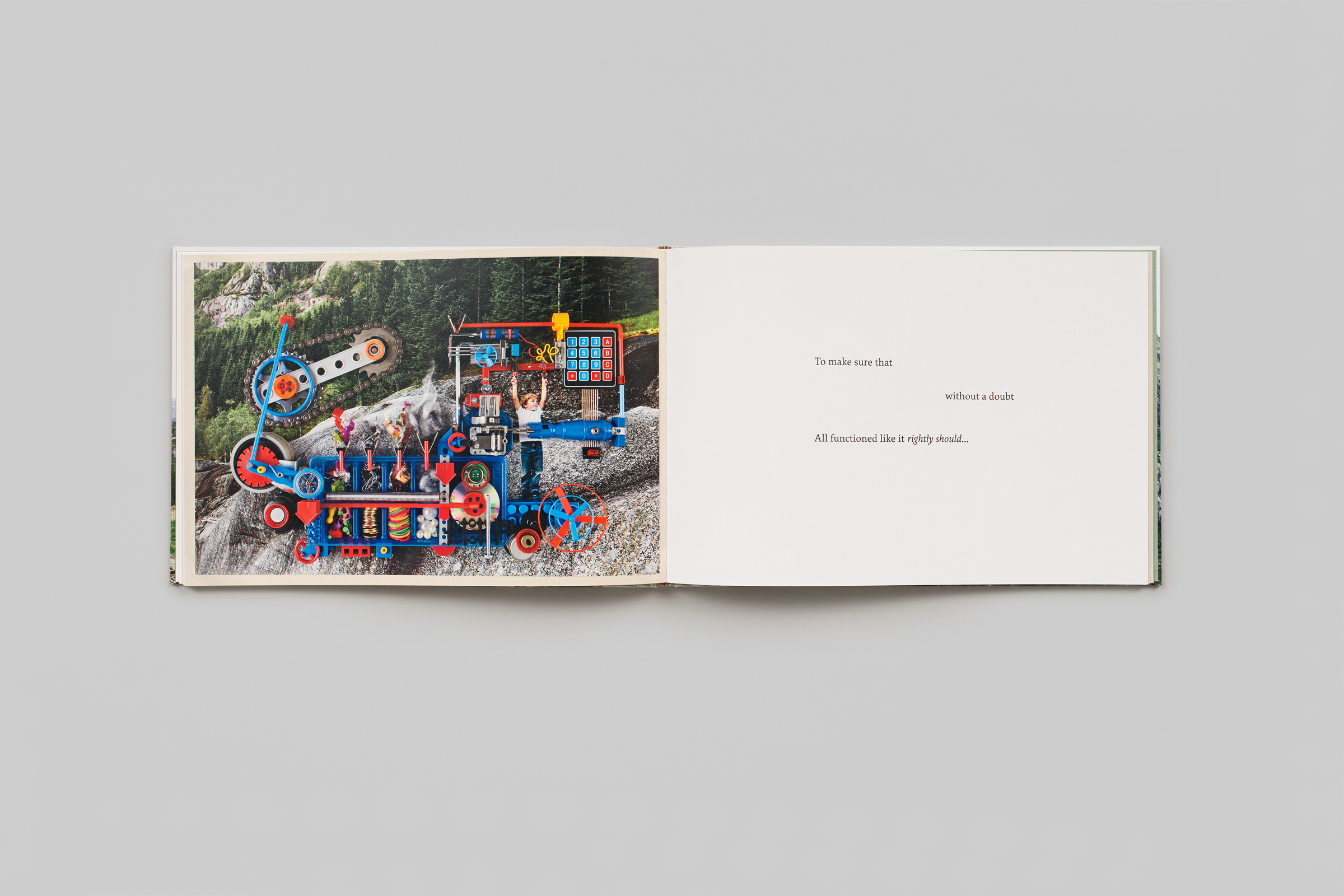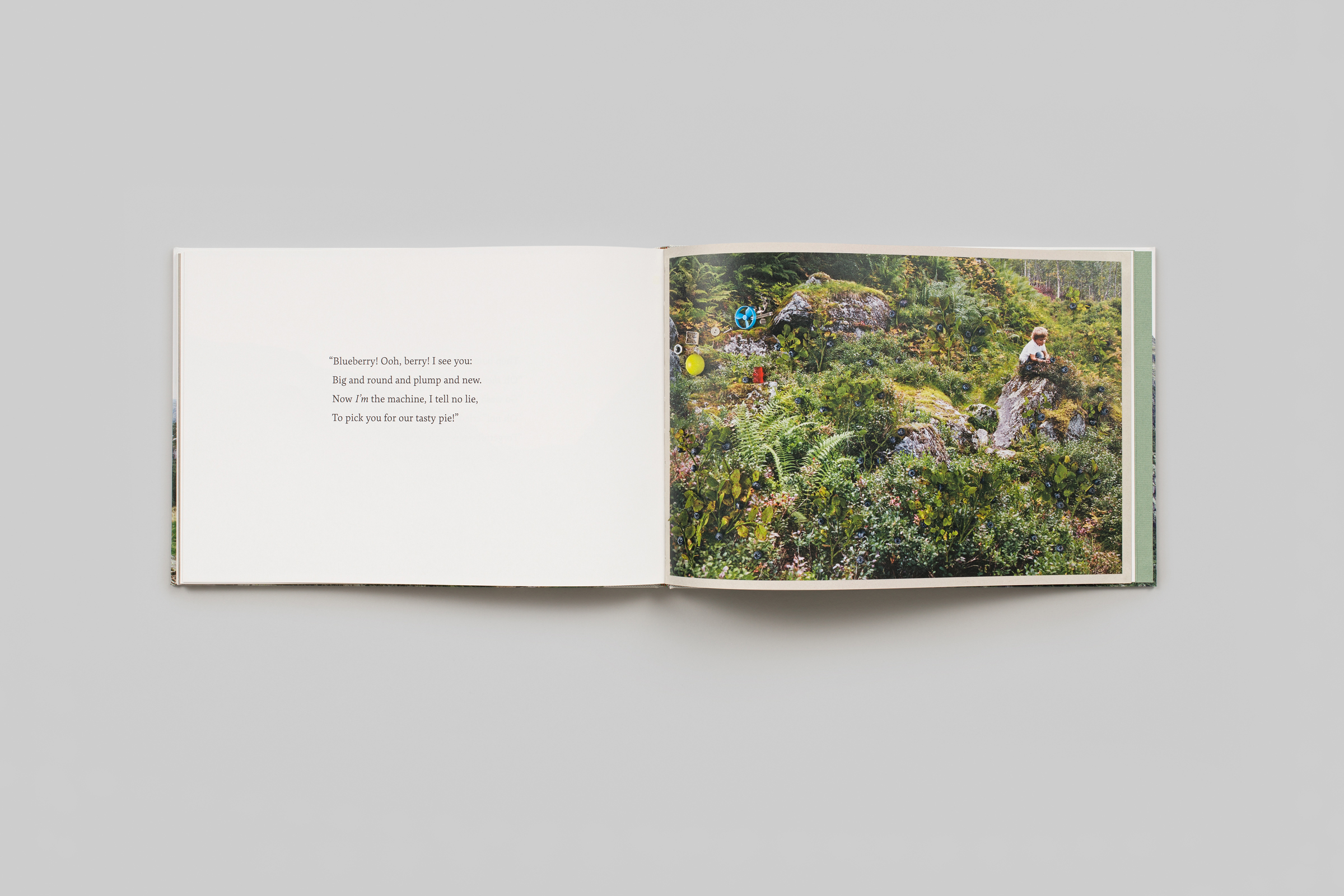The Blueberry Machine
A book for children by Jan von Holleben and Monte Packham
64,00 €Add to cart
Olav was a clever boy
Who didn’t need a single toy.
“That cannot be!” I hear you cry.
But true it was, I’ll tell you why.
Just sit back and enjoy this story
Of Olav’s grand machines of glory.
Welcome to the world of Jan von Holleben
Jan von Holleben has garnered a reputation throughout Europe as the “Dr. Seuss of photography” for his mind-bogglingly quirky illustrations that ignite the imaginations of young people and set them into action to make works of their own. His exhibition Dreams of Flying at the Victoria and Albert Museum of Childhood inspired hundreds of unsolicited responses from children who figured out his simple but magical photographic techniques and created their own contributions for the museum’s website. His editorial projects are iconic in Germany and his books have been translated into seventeen languages, but he is still unknown in the United States!
Now, The Blueberry Machine has come to the rescue to delight and inspire new readers. For parents and teachers taking a first step into the world of Jan von Holleben, the book will become an indispensable tool to draw kinesthetic learners, full-immersion doers, and fervent inventors into the wonders of the book, reading, and image making.
There are things to figure out here!
We meet young Olav, our master of invention, as he sets out from his tiny cottage into the vast landscape to gather blueberries for Sunday dessert. But as our narrator informs us, there is a more magnificent story to unfold. Quickly immersed in his imagination among the rocks, streams, and thickets of his family’s hillside farm, Olav fills his day (and the landscape) building wonder machines for both purpose and pleasure, while the narrator encourages the young reader to jump in with a detective’s eye for detail and a puzzle solver’s delight in a riddle to figure things out: How do they work? What do they do? How did Olav do that, and can I do that too? And what about the Blueberry Machine? What is it? Where is it? Who is it?
Monte Packham weaves his tale between, around, and through the wildly inventive illustrations of Jan von Holleben, which are themselves a riddle to be solved and an open invitation to the child to join in the fun and make something too. Nothing more is needed than the most ordinary objects and imagination to transform the reader’s own world into a place of wonder and invention.
Read a discussion between Nina Holland (editor/designer/printer) and Monte Packham and discover how this book was developed: Dinner Table Discussions at Little Steidl–Blueberries
Designed for emerging readers
The Blueberry Machine is designed to support new readers as they engage with the creativity and function of written language. The book is typeset in Andersen, a modern serif face designed by Thierry Fétiveau with emerging and dyslexic readers in mind. Like the riddles presented by the story and illustrations, the letterforms too will draw the attention and tiny fingers of a young reader with their dynamic visual rhythm and beautiful details. The typographic composition was worked out in several stages on press, allowing the designer and printer, Nina Holland, to evaluate and revise the size and spacing of the typographic elements on the real book paper. This method is essential for legibility but also ensures that the rhyming, rhythm, and word play of Monte Packham’s lively verse are fully expressed in the visual lines of the printed text.
Playing and learning together
The Blueberry Machine is a book to captivate a child over many years and to be handed down with fond memories to the next generation of readers. The book presents an opportunity for adults and children to engage with each other to figure out how Olav’s magical world came together and then to experiment with the techniques beyond the pages of the book. The Blueberry Machine is a reminder that less can be more and that the greatest gift for any child is time spent with their adults immersed in creative play and learning. Most children will take the lead and show their parents how to do it, but for parents and teachers in search of ideas and activities to extend the experience of the book, below you will find some playful learning activities for children at different developmental stages, including young artists, inventors, and writers who are already highly skilled. The activities include searching for objects, sorting into categories, rhyming and writing in verse, investigating mechanical functions, and making machines using Jan von Holleben’s techniques.
Ages: 2-10
Genres: children’s literature, visual art
Themes: creativity, invention, machines, recycling and repurposing, word play, image making
The Blueberry Machine
Half-linen hardcover binding with photo-illustrated wraps; stitched book block; reinforced spine
30×20.5 cm (11¾×8 in.); 56 pages
27 color images
Weight: 0.6 kg
Photography: Jan von Holleben
Verse: Monte Packham
Book design and production: Nina Holland
Separations: Nina Holland
Printing: Nina Holland / Little Steidl
Binding: Harmut Köhler Buchbinderei, Rodgau
This book was printed by Nina Holland on Little Steidl’s Roland 200 offset-lithographic printing press using a wet-on-dry process. One color is printed individually and allowed to dry for twenty-four hours before the next color is printed. Each sheet passes through the press eight times over a sequence of eight days.
2022
ISBN 978-3-944630-05-2
Printed in Germany by Little Steidl
About the Artists
Jan von Holleben
Born in 1977 and brought up in the southern German countryside, Jan von Holleben lived most of his youth in an alternative commune and identifies a strong connection between the development of his photographic work and the influence of his parents, a cinematographer and child therapist. At the age of thirteen, he followed his father’s photographic career by picking up a camera and experimenting with all sorts of magical tricks, developing his photographic imagination and skills with friends and family and later honing his technique in commercial settings.
After pursuing studies in teaching children with disabilities at the Pädagogische Hochschule in Freiburg, he moved to London, earned a degree in the Theory and History of Photography at Surrey Institute of Art and Design, and became submerged within the London photographic scene, where he worked as picture editor, art director, and photographic director. He quickly set up two photographic collectives, Young Photographers United and photodebut, followed more recently by the Photographer’s Office and the publishing house Tarzipan. His body of photographic work focusing on homo ludens – the man who learns through play – is itself built from a playful integration of pedagogical theory with his own personal experiences of play and memories of childhood.
Monte Packham
Born in Sydney, Australia, in 1981, Monte Packham earned honors degrees in art history and law from the University of Sydney before joining the Steidl publishing house as Editor for English Publications. He lives and works in Berlin and Göttingen. Packham writes for both children and adults and is the author of books including Concentric Circles (2010/2024); ABC Photography (2016); Living with Matisse, Picasso and Christo: Theodor Ahrenberg and His Collections (2018), Book of the Year at the 2019 Collector’s Awards; Photo Adventures (2019), and Rhyme Time (2021).
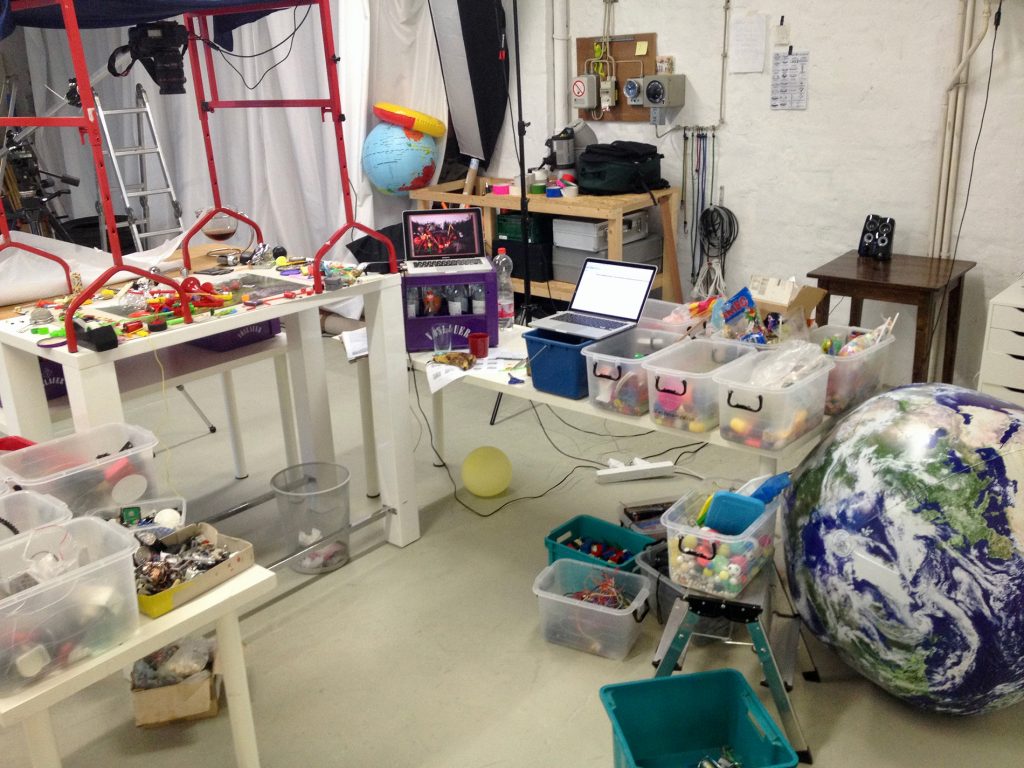
above: Jan von Holleben’s studio in Berlin, shown during the making of The Blueberry Machine. The camera is mounted above the work table.
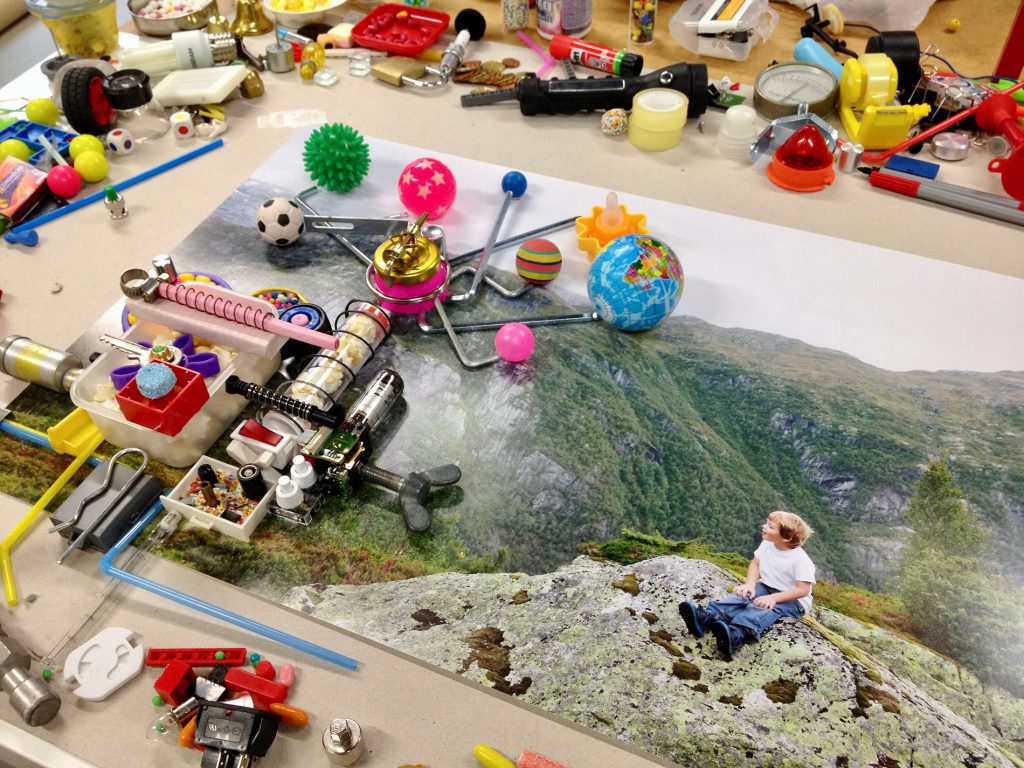
above: illustration in progress, shot from a lower vantage point to show how the objects sit on top of the photograph.
Activities for home and school
The following activities are based on the photographic and writing techniques used in The Blueberry Machine and can be used at home or at school to extend learning in the areas of social development and communication; listening, reading, and writing; visual observation; mechanics and mathematics; and visual art. The activities invite children and adults to explore together and invent new creations from the ordinary objects in their surroundings.
Activities for beginners: 2-6 years
includes:
Introduction: how the book was made
Looking at the pictures and making connections to the world around us
Finding objects in the neighborhood and among family and friends
Talking about objects and sorting them into groups
Looking at the machines around us and making our own
Reading, writing, and rhyming for beginners
Discover other artists and machines: all ages
Activities for older children: 7-10 years
includes:
Introduction: how the book was made
Finding and gathering objects
Rhyming and rhythm in The Blueberry Machine
Making machines
Writing about your machine in verse
Discover other artists and machines: all ages
